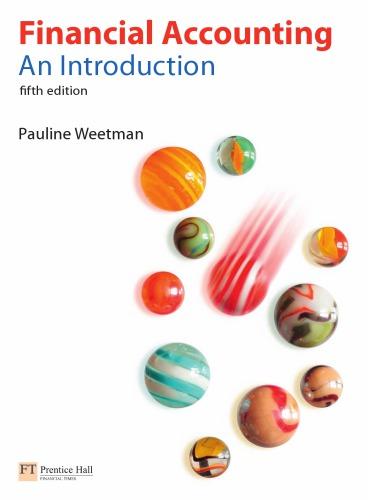The following list of transactions relates to a television repair business during the first month of business.
Question:
The following list of transactions relates to a television repair business during the first month of business. Explain how each transaction affects the accounting equation:
(Section 5.2)
(a) Owner puts cash into the business.
(b) Buy a vehicle for cash.
Activity 5.4 118 Part 2 Reporting the transactions of a business it equals the ownership interest as would be expected from the accounting equation.
The ownership interest has increased over the period through making a profit of
£1,700 but decreased by £1,000 through making drawings, so that the resulting increase is £700 overall.
Compare the financial statements of Dr Lee’s medical practice with the information collected in the spreadsheet of Table 5.3. Take a pencil and, very lightly, place a tick against each amount in the financial statements and a tick against each amount in the spreadsheet, as you match them together. If you are able to work backwards in this way from the financial statements to the spreadsheet then you will be well on the way to understanding how the financial statements are related to the original list of transactions.
5.6 Summary The first stage in recording a transaction is to think about its effect on the accounting equation.
Assets minus Liabilities equals Ownership interest A transaction must have at least two effects on the accounting equation. For example, when cash is contributed by the owner there is an increase in the asset of cash and an increase in the ownership interest:
Assets ↑ − Liabilities equals Ownership interest ↑
Accounting transactions may be recorded in a spreadsheet where the columns record the assets and liabilities and the rows record each transaction. The totals at the foot of all columns contain the information for the statement of financial position
(balance sheet) at the end of the period. The columns for revenue and expenditure allow the profit or loss to be calculated. The bank or cash column provides information for the statement of cash flows.
Chapter 5 Accounting information for service businesses 119
(c) Receive a bill for electricity consumed.
(d) Purchase stationery for office use, paying cash.
(e) Pay the electricity bill in cash.
(f ) Pay rental for a computer, used to keep customer records.
(g) Buy spare parts for cash, to use in repairs.
(h) Buy spare parts on credit terms.
(i) Pay garage service bills for van, using cash.
(j) Fill van with petrol, using credit account at local garage, to be paid at the start of next month.
(k) Carry out repairs for cash.
(l) Carry out repairs on credit terms.
(m) Pay wages to an employee.
(n) Owner takes cash for personal use.
AppendixLO1
Step by Step Answer:

Financial And Management Accounting An Introduction
ISBN: 9780273718413
5th Edition
Authors: Pauline Weetman





